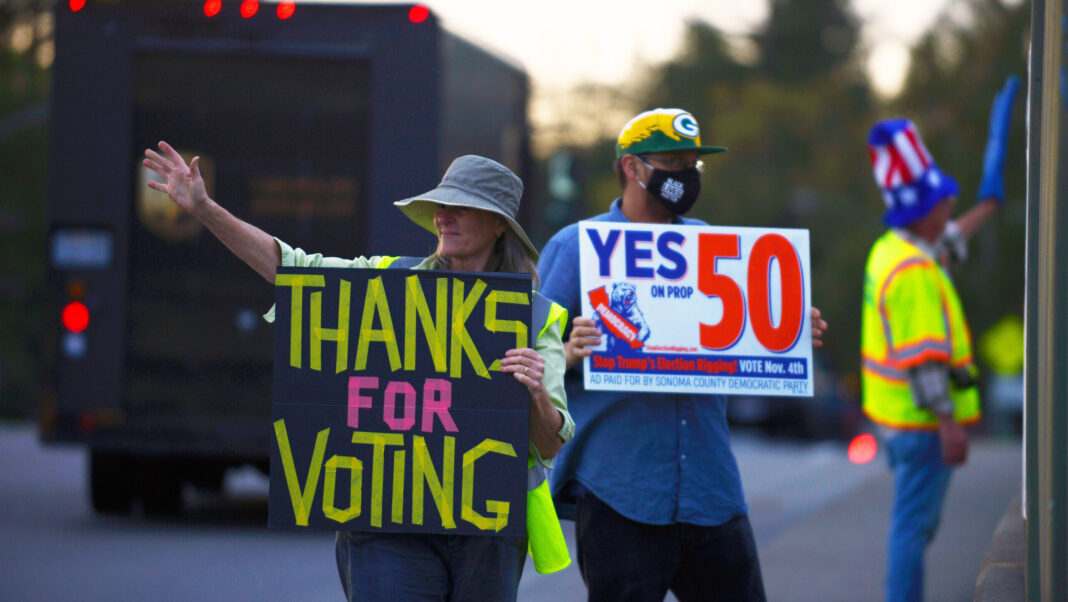California’s Redistricting Battle: A Game Changer for Democrats
California recently made headlines as voters approved new congressional district boundaries, a move that significantly enhances the Democratic Party’s chances in the upcoming 2026 elections. This decision represents a pivotal moment in the state-by-state redistricting contest that will influence control of the U.S. House and shape the political landscape under President Donald Trump’s administration.
Understanding Proposition 50
The catalyst for this shift was Proposition 50, which enables the Democratic-led legislature to redraw congressional maps, replacing those established by an independent commission. Supporters argue that this change is essential for countering Republican strategies, particularly those emerging from states like Texas, which are also reconfiguring their districts to gain favorable seats. The potential for California Democrats to garner up to five additional congressional seats could blunt Republican gains in Texas and other states, emphasizing California’s status as a crucial battleground in national politics.
Gov. Gavin Newsom’s Leadership Role
Democratic Governor Gavin Newsom played a prominent role in advocating for Proposition 50, framing the initiative as a tool to protect democracy against what he described as an aggressive Republican agenda. In public statements, he noted that winning the House majority could substantially impact Trump’s presidency, underlining the stakes at play as the country heads toward the 2026 elections.
Newsom posited that the California vote reflects a broader national sentiment against Trump, pointing to Democratic wins in New Jersey and Virginia as further evidence of a shifting political tide. He framed the redistricting approval as a necessary step for standing against Trump’s policies, suggesting that it could fundamentally alter the political balance in Congress.
Support from Prominent Figures
The campaign for Proposition 50 garnered backing from influential figures, including former President Barack Obama, who argued that the measure was vital for thwarting Republican attempts to secure congressional seats. In a poignant ad, Obama emphasized the significance of the vote, urging Californians to take a stand against what he characterized as efforts to “steal” elections.
This support lent additional credibility to the initiative, as it aligned with broader national concerns about gerrymandering and election integrity.
Opposition and Criticism
Critics, however, viewed Proposition 50 through a different lens. Prominent figures like former Republican Governor Arnold Schwarzenegger raised alarms about the implications of dismantling the independent commission that was designed to ensure fair districting in California. Schwarzenegger argued that embracing similar tactics to those employed by Republicans would undermine democratic principles, cautioning against a power consolidation that could ultimately disenfranchise voters.
Many detractors expressed their concerns over the erosion of voter control, feeling that redistricting should remain a process grounded in fairness rather than partisan advantage. Personal testimonies, including those from voters who wished to see a more balanced political landscape, highlighted the contentious nature of the redistricting debate.
Campaign Dynamics and Financial Disparities
The campaign surrounding Proposition 50 saw a significant financial imbalance, with proponents outspending opponents dramatically. In a state famous for high media costs, supporters raised more than $100 million, ensuring a robust presence across various platforms. The opposition, constrained by funding, struggled to maintain visibility, a factor that likely contributed to the measure’s decisive approval.
Republican congressmen facing potential job threats from the redistricting largely opted to remain on the sidelines, missing opportunities to galvanize public opposition. This avoidance may have further eroded their position as Newsom and his allies dominated the advertising landscape in the crucial final weeks leading to the election.
Voter Sentiment and Motivations
Polling revealed that a majority of voters were driven by political motivations when supporting Proposition 50. According to the AP Voter Poll, approximately 70% of voters viewed party control of Congress as critically important, indicating a heightened awareness of the stakes involved. Moreover, around 80% of supporters perceived the measure as a necessary response to Republican-led redistricting initiatives in other states.
This clear alignment with political objectives showcased how Californians view their votes not just as local choices, but as part of a larger national narrative about party control and election integrity.
Looking Ahead: The National Landscape
As congressional district boundaries are reshaped across the country, other states, particularly Republican-led ones, are actively pursuing similar redistricting strategies. States like Texas, Missouri, and North Carolina are poised to gain additional seats through revised maps, putting pressure on Democratic states to respond effectively.
While Colorado, Illinois, and other Democratic states are also considering redistricting proposals, challenges remain regarding successful implementation. In contexts where courts have intervened, such as Utah, the outcome of new maps could either enhance or undermine opportunities for Democrats moving forward.
California’s decision on Proposition 50 provides a critical case study in the ongoing battle over redistricting, revealing the deep divides and strategic maneuvers that characterize American politics in an era defined by hyper-partisanship and fierce electoral competition. As new maps take shape, both parties will closely monitor how these changes impact the 2026 election landscape and the future of governance in Washington.



